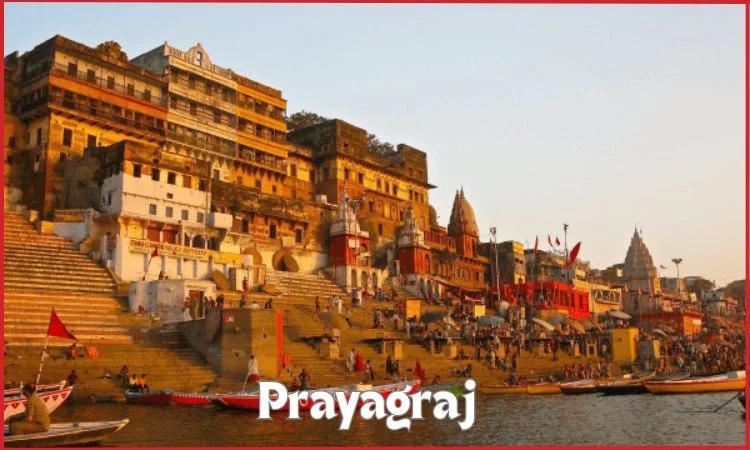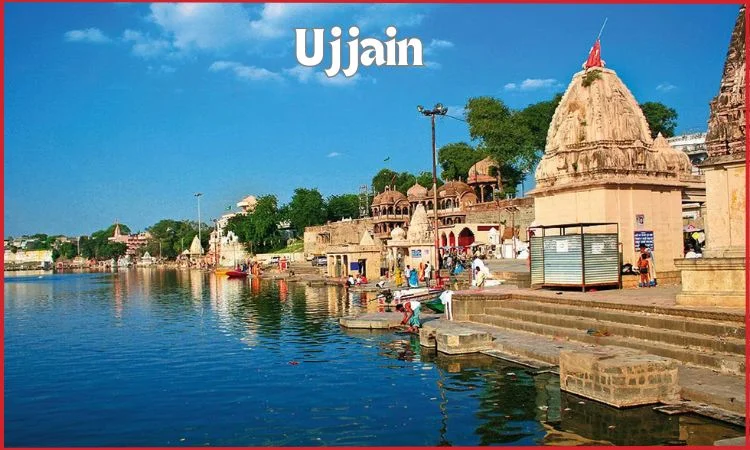Hinduism is among the ancient religions in the world, and Hindus have a glorious history which is often known from texts and stories like Vedas, Smritis, and Puranas. There is a lot for which we must start exploring this religion, but today, as we are heading towards Mahakumbha 2025, here we will discuss it including all its aspects.

Source: Google Images
In this article, you will get to know about the Mahakumbha Mela from its historical aspect to its modern aspects, like its spiritual aspect, religious aspect, and societal aspect. If you are planning to visit here, then you must read this all and answer whether you must visit or not.
Mahakumbha Mela 2025: What is it?
It is a collective function of billions of people. Moreover, Hinduism followers (Sadhus and Aghoris) from all over the world on specific dates and planet geography are set as per the Hinduism calendar. Generally, this happens every 12 years, generally in January to February in one of the four places (Prayagraj, Nasik, Ujjain, Haridwar).
As per the Vedas and ancient text, this Kumbh Mela is a holy function in which these people take a holy dip in the river Ganga and believe that this dip directly cleans their sins, which takes them close to salvation. There are some specific times in which this dip is assumed valuable, and only sages and aghoris are allowed to take a dip in the holy Ganga.

Source: Google Images
After ceremonial bathing in water, the festivity also becomes a high celebration of life in the community. It crams busy fairs, talks or lectures on education, with religious discourses being delivered by the saints, mass gatherings of monks, and much more entertainment.
It is believed that this festival was instituted in the 8th century by the Hindu philosopher and saint Adi Shankara, which he termed as a part of his major activities for organizing large Hindu congregations of deliberate philosophical discussions and debates along with the establishment of Hindu monasteries across the Indian subcontinent.
Mahakumbha Mela 2025: Historical Story
As per the ancient Hindu scripture’s mythological narratives, the Rigveda and Mahabharat in the Hindu religion and the Pali canons in Buddhism have a record of Kumbh Mela and taking religious baths in the river Ganga and Prayag.
Most of the Hindus consider that the current Kumbh Mela holds antiquarian value within the mythological account of Samudra-Manthana found in the Vedic texts. However, historians refute this, as none of the ancient or medieval texts linking Samudra Manthana mentions a ‘mela’ or festival in connection with it. As per scholar Giorgio Bonazzoli, these beliefs are highly anachronistic as they adapt older myths by a narrow set of followers to link them to a later, popular pilgrimage and festival.

Source: Google Images
According to Hindu legend, when the gods churned the ocean of creation with demons, an “amrita pot” (elixir of immortality) was created. They jostle with each other for the immortality gift within the kumbha (pot). Later incastings of the myth state that the pot spilt places—many places, thus, the basis of four Kumbh Melas. Such a story as this: some version says that the pot was drenched at being spilt: Vishnu in his Mohini avatar. The spillage is related to Dhanvantari, Garuda, and Indra, among others. Most significant is that this spilling narrative of the pot is absent from the early accounts of Samudra Manthana, such as the Vedic texts (pre-500 BCE) or the later Puranas, from the 3rd to the 10th century CE.
Nowhere in the ancient or medieval texts, however, is Kumbh Mela directly mentioned, although numerous references could be adduced to evidence of a sacred bathing festival at the intersection of the three rivers—Ganga, Yamuna, and the mythical Saraswati at Prayag. These texts refer to the snan (bathing) ritual and extoll the Prayag Mahatmya (greatness of Prayag), which guides pilgrims to this holy place.
Don’t Miss: Important Festivals of India (State-wise)
Mahakumbha Mela 2025: When does it take place?
Kumbh Mela is celebrated every 12 years. The revolution of Brihaspati (Jupiter) completes, and as per the Hindu calendar, Kumbh melas are held at certain times during certain astrological alignments of the Sun, Moon, and Jupiter. Thus, the festival commences at that precise instant when such heavenly changes occur and is believed to be the holiest hour in Hinduism. The Kumbh merges astronomy with astrology, spirituality with rituals, and social practices, and awakens a source of learning.
Generally, this festival falls in January and February, and some of the important baths are special, like 13 January Pusha Purnima, 14 January Makar Sankranti, 29 January Mauni Amavasya, 3 February Basant Panchami, 12 February Maghi Purnima, and 26 February Maha Shivaratri in 2025.
Apart from this, the Mahakumbha Mela, which takes place every 12 years, and an Ardh Kumbha Mela, which takes place every 6 years in the same locations as Haridwar and Prayagraj.
Mahakumbha Mela 2025: Where it takes place
The places where these Melas are held are known as the auspicious places where the drop of elixir falls from the pot carried by the Devatas. These are listed below with their religious significance. This year, in 2025, this mela is organized in Prayagraj, where only the place three different rivers meet and a point called Sangam.
1. Prayagraj (Uttar Pradesh)

Source: Google Images
Prayagraj is one of the four places where this Kumbha Mela is organized, and a gathering of all Naga Sadhus and Saints visits to take a dip in the rivers. As per the planet’s geography, this Kumbh Mela is held when the Sun is in Capricorn and Jupiter is in Aries.
The Ardh Kumbha Mela of 2019 happened in Allahabad, now in Prayagraj, which established a genuine book of world records for having the largest number of people in one place and Mela. This place is important due to the confluence of the Ganges, the Yamuna, and the mythical invisible Sarasvati.
2. Haridwar (Uttrakhand)

Source: Google Images
In Haridwar, Uttarakhand, on the banks of the Ganges, the Kumbha Mela is organized every 12 years and every 6 years for the Ardh Kumbha. It also is understood that this mela occurs when the Sun is in Aries and Jupiter is in Aquarius.
Haridwar is the place in the Uttarakhand state where the holy Ganga River comes directly from its origin with the most clarity without any impurities. The Ghats and area for taking a dip in Haridwar are a little less crowded, due to which the religious pilgrims feel crowded.
3. Ujjain (Madhya Pradesh)

Source: Google Images
Ujjain in Madhya Pradesh is the famous district of MP state where Lord Shiva himself lives, being the fierce energy in the name of the Mahakaleshwar Temple, which is also one of the 12 jyotirlingas of India near the Shipra River in Ujjain, Madhya Pradesh.
4. Nasik (Maharashtra)

Source: Google Images
Nasik is also one of the four places where the Kumbha Mela is celebrated every 12 years of the planet’s geographical cycle of Brihaspati (Jupiter). In the banks of the Godavari, this place has its significance in the religious text where this Kumbh Mela takes place. Generally, all three places except Prayagraj have a narrow place where not many people can accommodate.
But in Prayagraj, there is a large area of accommodations for billions of people, and also we have seen in the 2019 Ardh Kumbha Mela, which has made a Guinness Book of World Records for the largest peaceful public gathering.
Mahakumbha Mela 2025: What Happens?
To attain salvation is the greatest goal of our soul, for which this body keeps changing, and the human body is the most advanced machinery in the universe. As per the Vedas, this Mahakumbha is the perfect time when the soul may attain deliverance by taking a dip in the holy Ganga river.
People used to take baths and dip in the river where the elixir drop fell down the following rivers: Shipra in Ujjain, Godawari in Nasik, Ganga in Prayagraj, and Haridwar. As per the Hinduism calendar and celestial geography, all the Sahi Snan must be attended for maximum spiritual benefit.

Source: Google Images
Once people complete the bath, they visit the famous temples near the rivers, like this time in Mahakumbha Mela 2025, Lete Huye Hanuman ji Temple, Nagvashuki Temple, Patal Puri Temple, Akshayvat Tree Darshan, Alopi Devi Temple, Shankaracharya Temple, and more.
In the specific time and Muhurats, these scans may bring a lot of prosperity and joy into human life. It’s a special moment to see for every person when the Keshari Colour covers the whole ground of Sangam in Prayagraj and shouts ‘Har Har Mahadev’ before going into the Ganga River.
Mahakumbha Mela 2025: Why is it important?
The importance of Mahakumbha Snan lies in the hands of every individual, as said, “Untruth leads us to truth, darkness leads us to light, death leads us to immortality.” Hence, everyone should enjoy the bath dip in this grand religious occasion of the ancient Hindu religion.
It’s also been said by the great beings of the world that god itself visits this Kumbha Mela to give blessings and be a part of this great religious occasion. This is the most auspicious time for the Hindus in India, and almost all Hindus must be part of this festival. No matter where you are and how you are, it is high time that all should cleanse their soul and karmic body.
This Mahakumbha 2025 is going to be the world’s largest gathering of people for religious purposes in one place, for which the government is also the main organ, which is solely responsible for maintaining law and order in the city. Today there are so many well-furnished roads, lights, tents, and other basic requirements that make this festival the best to take part in, so don’t wait and book your ticket soon.
Mahakumbha Mela 2025: New District of Uttar Pradesh
This Mahakumbha Mela is now recognized as the 76th district of Uttar Pradesh, which has been introduced by the Uttar Pradesh Government, where it has established new stations, tents, administration, and electricity mobility. For a government, it is very important to maintain peace and maintain law and order, for which there is a great mobilization of the police force from one place to another.
A total of 30 platoon bridges and more than one lakh tents have been installed in the Kumbha Ground for the residents of the people who will visit the Pyaragraj. For people’s safety and security, several security checkups have been made to ensure the safety of every individual.
Must Read: Top 10 Hill Stations in India
Conclusion
Mahkumbha 2025 is the exclusive religious get-together of billions of Hindus, including the pure souls of Sadhus and great Aghori beings under whose shadow the whole crowd feels safe and secure. In this Kaliyug, it is one of the best moments when all Hindus must attend this to cleanse their soul. If you are coming, then make sure to bring some basic requirements such as your tent, sleeping bag, some food items, and winter clothes. May God bless you and your family with happiness and prosperity during this Kumbha.
FAQs
1. What are the famous places to see in Prayagraj?
In this Mahakumbha Mela 2025, you must also visit these places Prayagraj Triveni Sangam, Sri Mankameshwar Temple, Chandra Shekar Azad Park, Anand Bhawan Museum, University of Allahabad, ISKCON Temple, Sri Bade Hanuman Ji Temple, Sankaracharya Temple, and Alopi Devi Temple.
2. What are the main bathing dates of Kumbha Mela 2025?
The Maha Kumbha Mela 2025 is going to be organized from 13 January 2025 to 26th of February 2025 and here are the important bathing dates one should not miss:
- 13 January (Paush Purnima)
- 14 January (Makar Sankranti)
- 29 January (Mauni Amavasya)
- 03 February (Basant Panchami)
- 12 February (Maghi Purnima)
- 26 February (Maha Shivaratri)
3. How to reach Prayagraj?
To reach this destination, one must plan his trip to Uttar Pradesh. After reaching any destination, such as Lucknow, Varanasi, Gorakhpur, and Kanpur, one can take direct buses, trains, and aeroplanes to Prayagraj.
4. How many days to visit Kumbh Mela?
Day 1 includes arrival, check-in, meals, a round at Kumbh Mela, and witnessing Ganga Aarti. Day 2 features meditation, a royal bath in the river Sangam, visits to cultural landmarks, and interactions with Akharas. Day 3 includes farewell and making memories.
5. Why is Kumbh Mela celebrated every 12 years?
Astrologically, the Kumbh Mela is held when these celestial bodies are in a favourable position, which is considered spiritually significant. Each Kumbh Mela location – Prayagraj (Allahabad), Haridwar, Ujjain, and Nashik – follows its own 12-year cycle based on specific astrological alignments.














